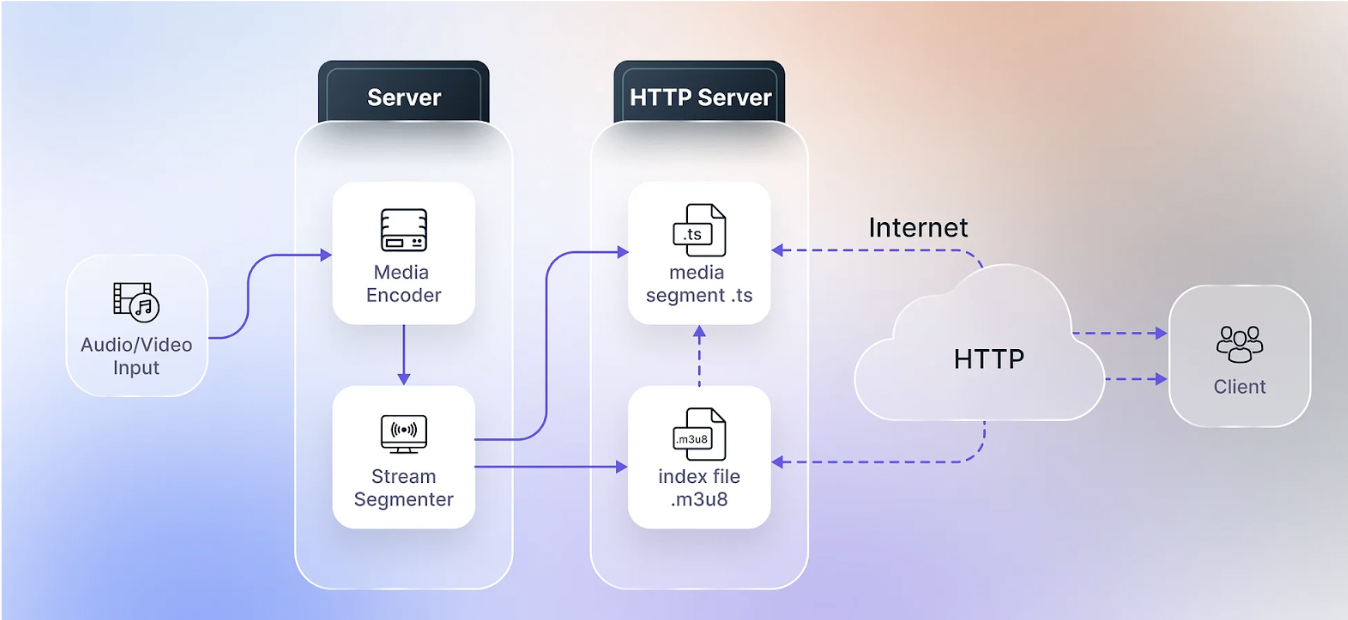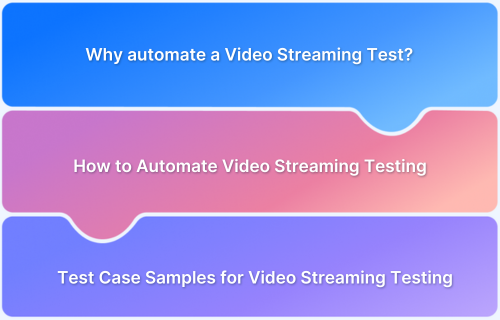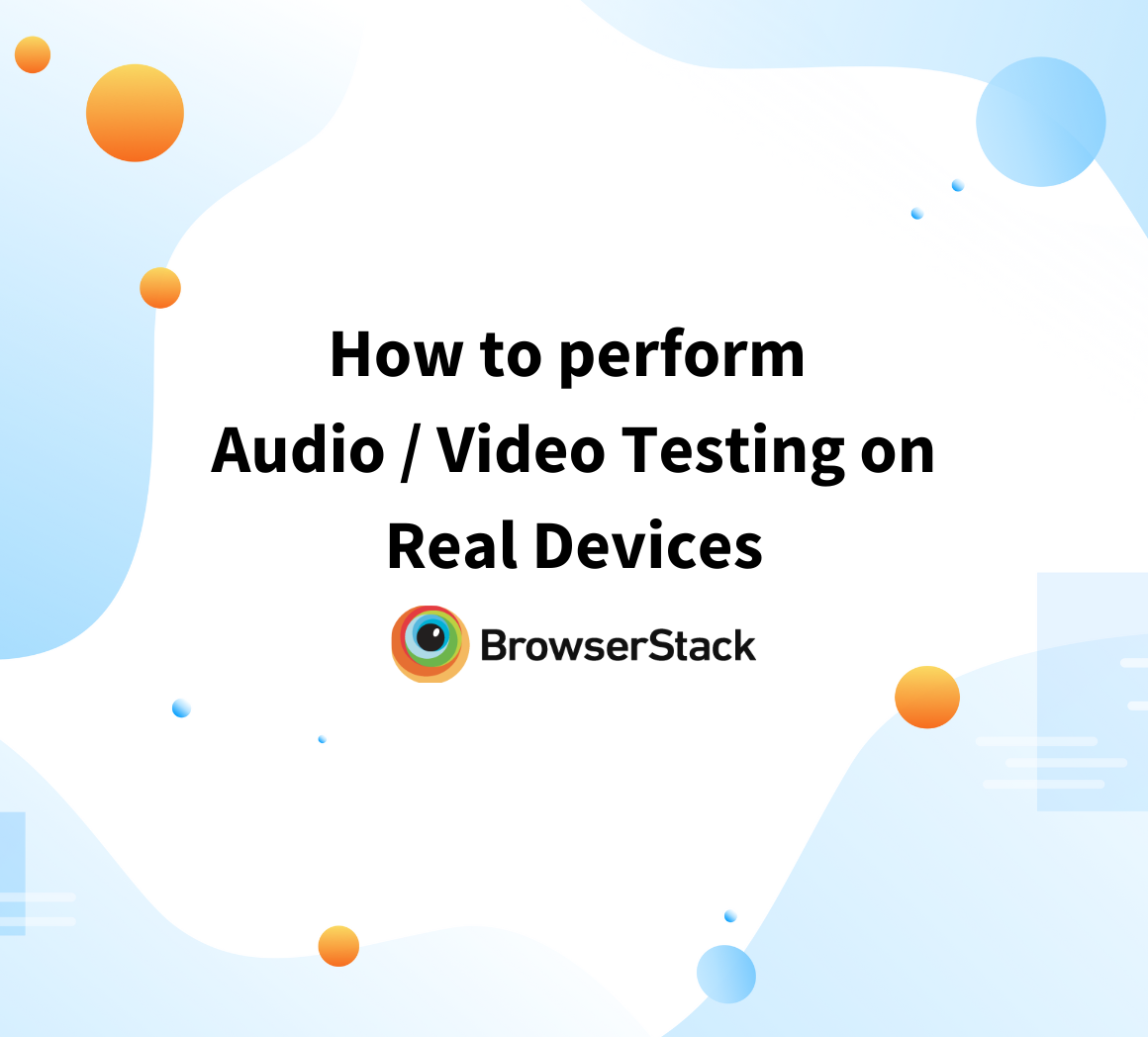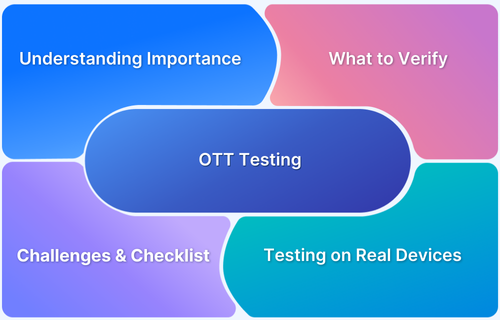With the rise of video streaming platforms, ensuring high-quality video playback has become essential for developers and testers.
Overview
What are HLS Streams?
HTTP Live Streaming (HLS) is an Apple-developed protocol that delivers video and audio content online by breaking it into small segments via HTTP.
Importance of Testing HLS Streams
Testing HLS streams for quality and performance ensures users have a smooth and enjoyable viewing experience.
Key Areas to Test in HLS Streams
- Validate playlist formatting and integrity
- Ensure seamless segment delivery
- Test adaptive bitrate switching
- Verify playback across devices
- Check video quality consistency
- Measure and minimize latency
- Simulate varying network conditions
- Handle errors and reconnections
- Test stream security measures
This article explores HLS streams, their workings, and how to test them effectively.
What are HLS Streams?
HTTP Live Streaming (HLS) is a protocol developed by Apple to deliver video and audio content over the internet. It breaks down video content into small, manageable chunks called segments and delivers them through HTTP.
HLS allows adaptive bitrate streaming, ensuring smooth playback even with varying network conditions. It is widely supported across devices, browsers, and operating systems, making it a popular choice for video streaming platforms.
What is Streaming?
Streaming is the process of delivering multimedia content, such as video, audio, or both, in real time over the Internet.
Unlike traditional downloads, where the entire file must be saved before playback, streaming allows users to start consuming content immediately as data is transmitted.
This technology powers platforms like Netflix, YouTube, and Spotify, offering instant access to entertainment without lengthy waits.
Also Read: How to Automate Video Streaming Testing
What is HTTP?
The HyperText Transfer Protocol (HTTP) is the foundation of data communication on the web.
It is an application-layer protocol that defines how data is transmitted between servers and clients, such as web browsers or devices.
HTTP enables the transfer of resources like web pages, images, and videos and typically operates on a request-response model, where clients request data and servers respond with the requested resources.
When streaming over HTTP, however, the traditional request-response pattern changes. The connection between the client and server remains open throughout the stream. Instead of repeatedly requesting data, the server pushes video segments to the client in real time. This mechanism allows HLS to deliver video content seamlessly, leveraging HTTP’s reliability and compatibility across various devices and networks.
How Does HLS Work?
HLS works by breaking video content into small, manageable chunks & delivering them efficiently over the internet.
Here’s how HLS works:
- Step 1: The original video is encoded into multiple versions at different quality levels (resolutions & bitrates).
- Step 2: Divide the encoded video into fixed-duration chunks called segments, typically 6 seconds each.
- Step 3: Create a .m3u8 manifest file listing the video segments, their URLs, and metadata such as quality levels and playback sequence.
- Step 4: Host the video segments and the manifest file on an HTTP-compatible web server.
- Step 5: When playback starts, the user’s device downloads the manifest file to determine the appropriate quality level based on network speed and device capabilities.
- Step 6: During playback, adjust the stream quality dynamically based on real-time network conditions to ensure seamless viewing.
Source: Gumlet
Importance of Testing HLS Streams for Quality and Performance
Testing HLS (HTTP Live Streaming) streams is crucial to ensure viewers have a smooth and reliable streaming experience.
Here’s why it matters:
- Ensures Smooth Playback: Verifies uninterrupted playback and accuracy of the manifest file for seamless loading.
- Validates Adaptive Streaming: Confirms smooth quality transitions to match changing network conditions.
- Checks Video and Audio Quality: Detects corrupted segments and ensures consistent quality across platforms.
- Handles Network Challenges: Tests performance under poor or fluctuating network conditions.
- Supports Multiple Devices: Ensures compatibility across devices, browsers, and smart TVs.
- Optimizes Bandwidth Usage: Validates efficient bitrate usage and minimizes latency for live streaming.
- Tests Subtitles and Audio Tracks: Confirms functionality and synchronization of subtitles and audio options.
- Improves User Experience: Prevents issues like buffering or crashes, ensuring high-quality viewing.
Key Areas to Test in HLS Streams
Below are the key areas to focus on, along with specific aspects to test within each area:
- Playlist File Integrity: Ensure M3U8 playlist files are correctly formatted, with accurate segment durations, sequence numbers, and proper references to media and variant playlists for smooth playback.
- Segment Delivery: Test that segments load consistently and quickly, with proper HTTP response codes. Verify how network errors are handled, ensuring the stream can recover without interruptions.
- Adaptive Bitrate Switching: Confirm that the stream smoothly switches between different bitrates based on available bandwidth, maintaining optimal video quality and preventing buffering.
- Playback Compatibility: Test the stream on various devices (iOS, Android, desktops) and ensure compatibility with different HLS players to ensure smooth playback across all the platforms.
- Video Quality: Check video quality at different bitrates to ensure clarity & smooth playback. Test for stable frame rates and avoid visual artifacts or distortion.
- Latency: Measure the delay between live events and stream playback to ensure minimal latency, especially for live streams, providing real-time content delivery.
- Network Conditions: Simulate different network speeds (high, low, fluctuating) to test adaptive streaming performance. Ensure the stream gracefully handles congestion and packet loss.
- Error Handling: Ensure proper handling of network errors and reconnection attempts, with graceful degradation to lower quality during network issues, keeping playback smooth.
- Security: Test stream encryption (e.g., AES-128) to secure content delivery and ensure proper authentication and access control to protect against unauthorized access.
Testing HLS Streams for Quality and Performance
Here’s how to test HLS streams:
- Check the HLS URL: Ensure the HLS stream URL (.m3u8 file) is valid and accessible in a browser or player like VLC.
- Test Playback in Multiple Players: Verify the stream plays smoothly without buffering or audio issues in different media players.
- Check Video Quality: Test various resolutions (e.g., 480p, 720p, 1080p) for smooth transitions and consistent quality.
- Test Buffering and Latency: Monitor playback for quick start times and minimal buffering or latency.
- Monitor Stream Stability: Play the stream for extended periods to detect interruptions or quality degradation.
- Test Compatibility Across Devices: Ensure the stream works seamlessly on diverse devices and operating systems.
- Test Adaptive Bitrate (ABR): Simulate different network conditions to verify bitrate adjustments for uninterrupted playback.
- Verify Audio Sync and Quality: Check for proper audio-video synchronization and clear, distortion-free sound.
- Check Error Handling: Simulate network issues to ensure graceful error recovery and appropriate messages.
- Check Stream Switching: Fast forward, rewind, or skip sections to confirm smooth transitions and proper segment handling.
- Validate Stream URLs and Segments: Verify the .m3u8 playlist links to accessible segments with correct timestamps.
Also Read: How to perform Cross Device Testing
Cross-Device Testing HLS Streams
Cross-device testing ensures your video content plays smoothly on all devices, including smartphones, tablets, computers, and smart TVs, delivering a consistent viewing experience regardless of platform.
This involves testing on different OSs, screen sizes, network conditions, and browser versions to identify and resolve playback issues while optimizing streaming quality for all users.
Testing HLS streams across devices is simple and effective with BrowserStack Live. Here’s why it’s the perfect solution:
- Access to 3500+ Real Devices and Browsers: Test your HLS streams on 3500+ real devices and browsers. Simply choose the desired browser-device combination and ensure compatibility across various platforms.
- Test Under Real World Conditions: Simulate real user conditions like slow networks, different geolocations, and varying internet speeds to guarantee a seamless viewing experience for everyone.
- Experience Different Screen Sizes: See how your HLS streams look on devices with different screen sizes & resolutions to ensure consistent quality across all screens.
- Debug in Real Time: With built-in DevTools, quickly identify and resolve issues such as playback errors or buffering, making the testing process faster & more efficient.
Best Practices for Ensuring High-Quality HLS Streams
Some of the best practices include:
- Use Adaptive Bitrate (ABR) Streaming: Implement ABR to automatically adjust video quality based on the viewer’s network speed, ensuring smooth playback without buffering.
- Optimize Encoding Settings: Use efficient codecs like H.264 or H.265 and set appropriate resolutions, frame rates and bitrates to balance quality and performance.
- Segment Files Correctly: Keep HLS segment files small (e.g., 6-10 seconds) for faster loading and seamless transitions between segments.
- Test Streams on Multiple Devices: Check playback across smartphones, tablets, desktops, and smart TVs to ensure compatibility with different operating systems and browsers.
- Simulate Real-World Conditions: Test under various network speeds, including 3G, 4G, and Wi-Fi, to ensure consistent user performance.
- Implement Closed Captions and Subtitles: Add closed captions and subtitles to make your streams accessible to a broader audience, including those with hearing aids.
- Use a Reliable CDN: Deliver content through a Content Delivery Network (CDN) to minimize latency and improve streaming quality for global users.
- Monitor and Analyze Playback: Use tools like AWS CloudWatch or analytics platforms to track performance, monitor errors, and gather user feedback for continuous improvement.
- Ensure DRM Protection: Secure your content with Digital Rights Management (DRM) to prevent unauthorized access and piracy.
Conclusion
HLS streaming has revolutionized video content delivery, offering a reliable, scalable, and user-friendly solution for broadcasters and creators. With platforms like BrowserStack Live, organizations can further enhance their HLS streaming capabilities, ensuring a smooth and seamless viewing experience.
As the demand for high-quality video grows, HLS remains essential for effectively reaching global audiences. By understanding and implementing HLS streaming with the right tools and technologies, businesses can deliver exceptional experiences.








